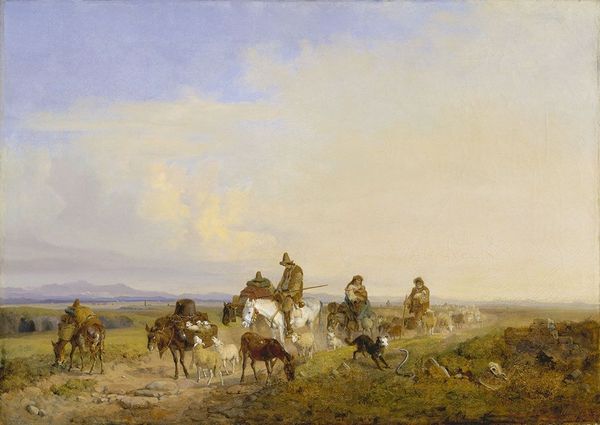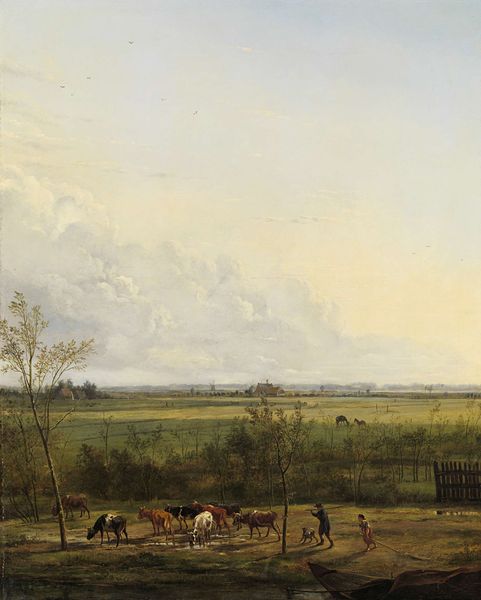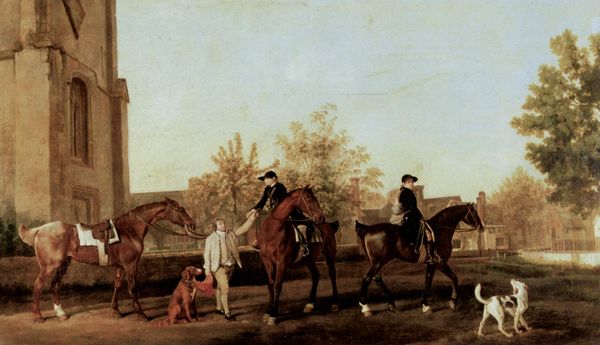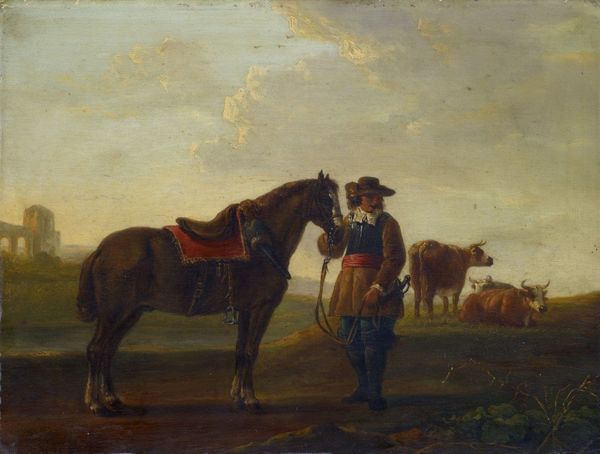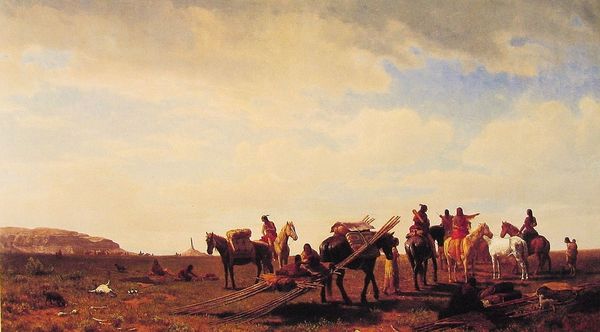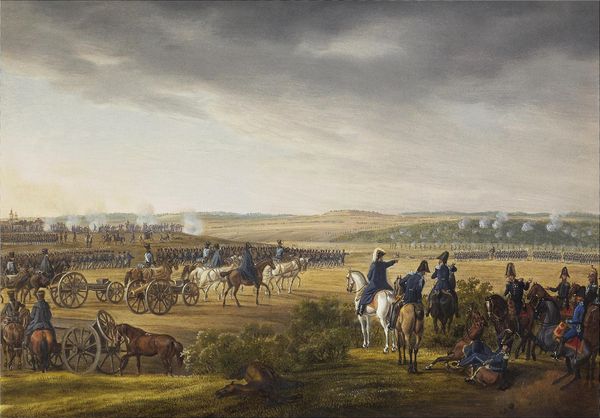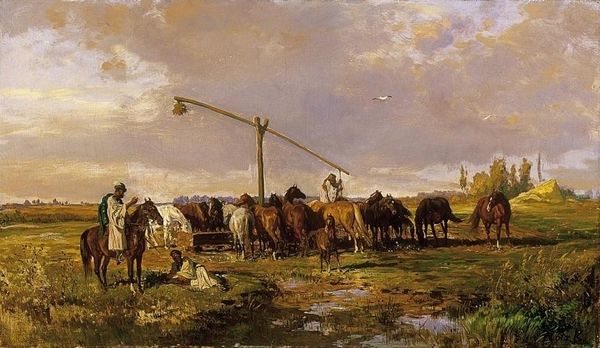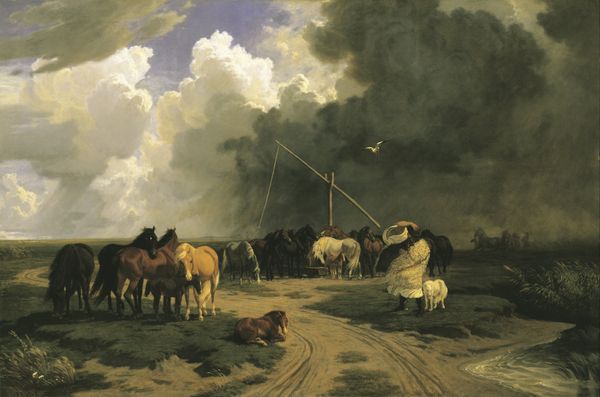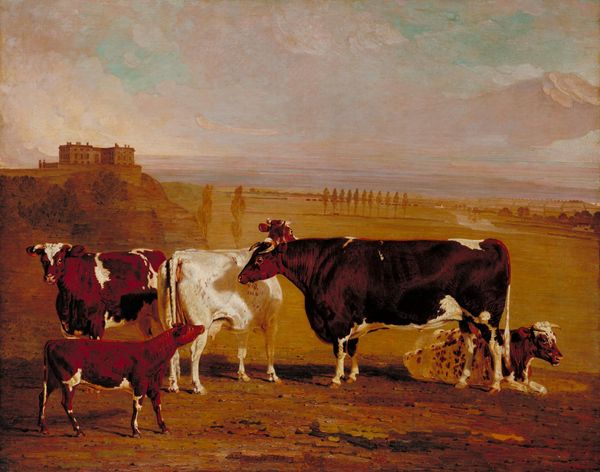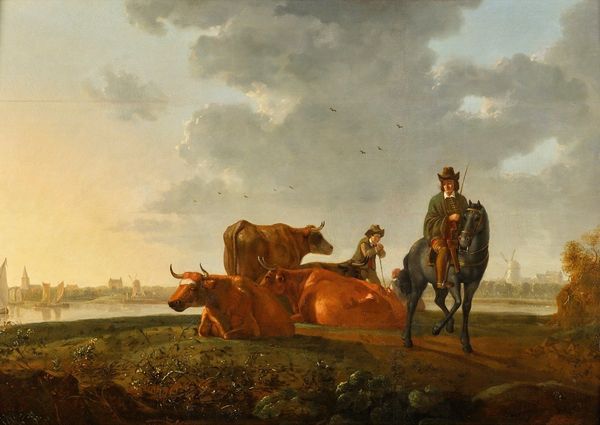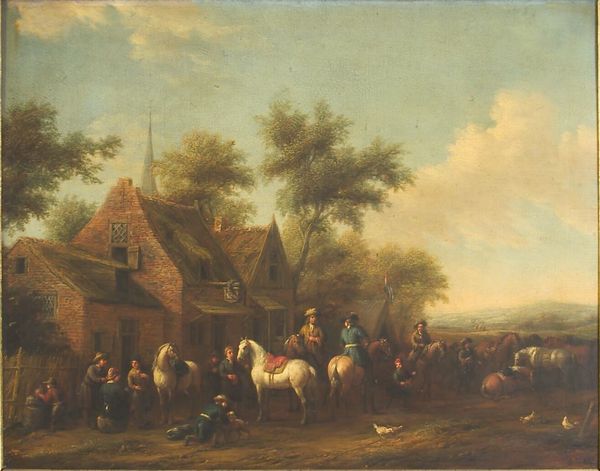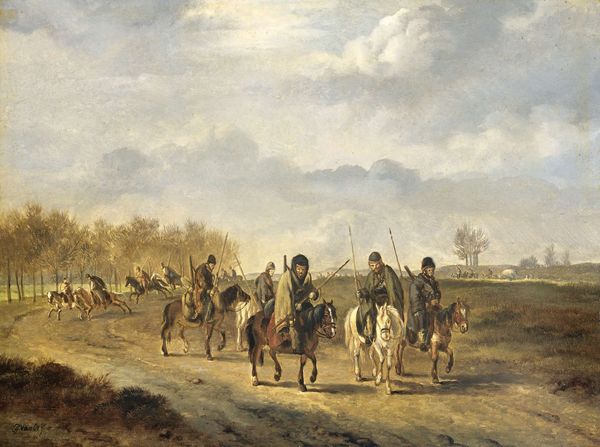
Copyright: Public domain
Károly Lotz painted "Watering the Horses on the Puszta" in oil, capturing a slice of Hungarian rural life. The image presents a scene of horses drinking, overseen by herdsmen in traditional garb. It reflects the romantic nationalism that was sweeping through Europe at the time. Lotz, a key figure in Hungarian art, became famous for his frescoes and history paintings, often commissioned for public buildings. Here, the Puszta, the Great Hungarian Plain, becomes a symbol of national identity. The image taps into a cultural mythos of Hungarian independence and strength, embodied in the figure of the horseman. The painting omits the social realities for many in the region at the time, like poverty or the decline of traditional agricultural life. Instead, it presents an idealized version of rural existence. To better understand the painting's function, one could study the history of Hungarian art institutions and their promotion of national themes. By doing this, we can start to see how art shapes and is shaped by social and institutional forces.
Comments
No comments
Be the first to comment and join the conversation on the ultimate creative platform.
